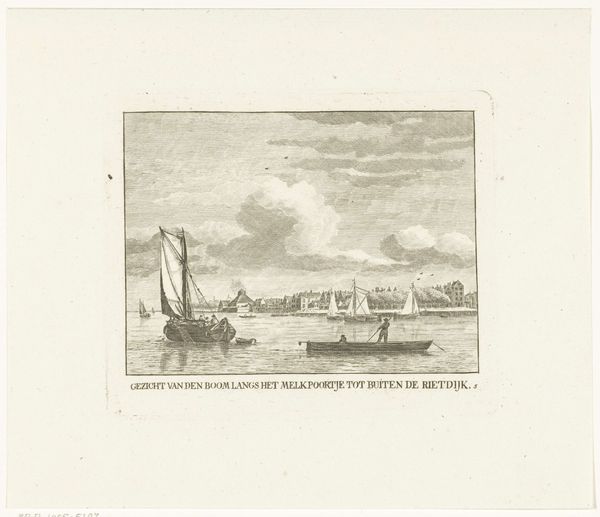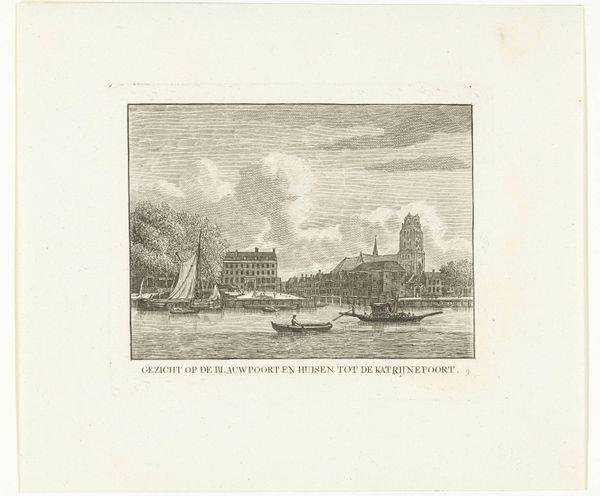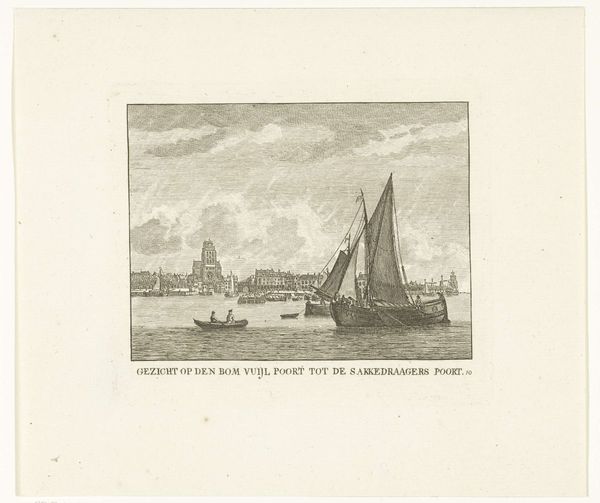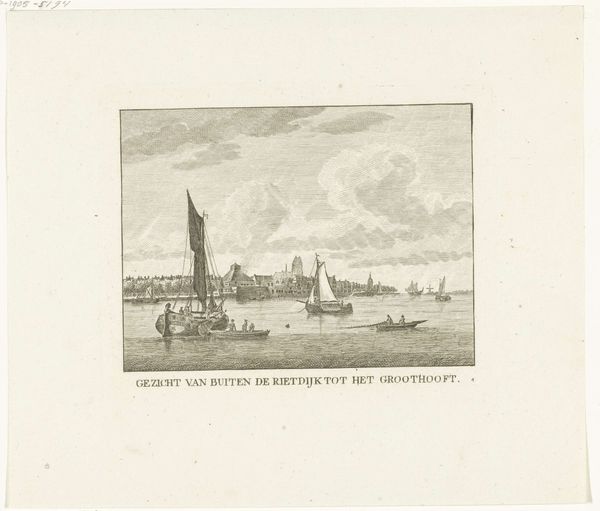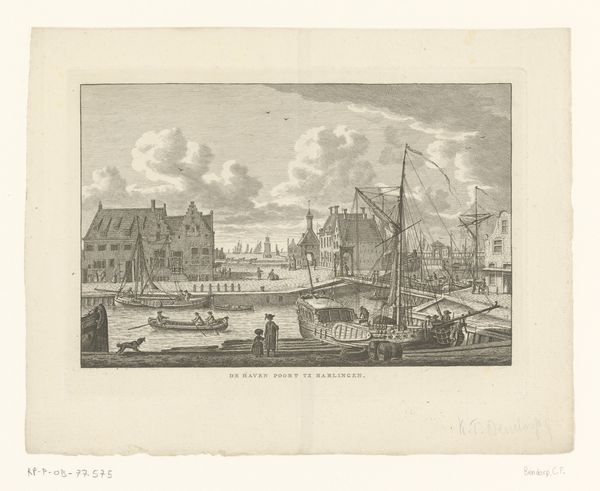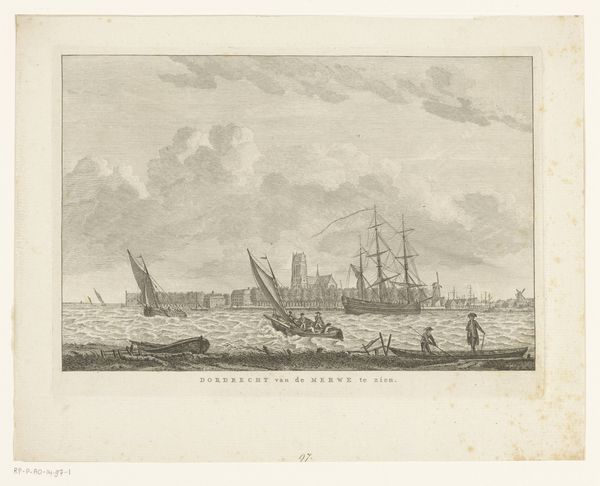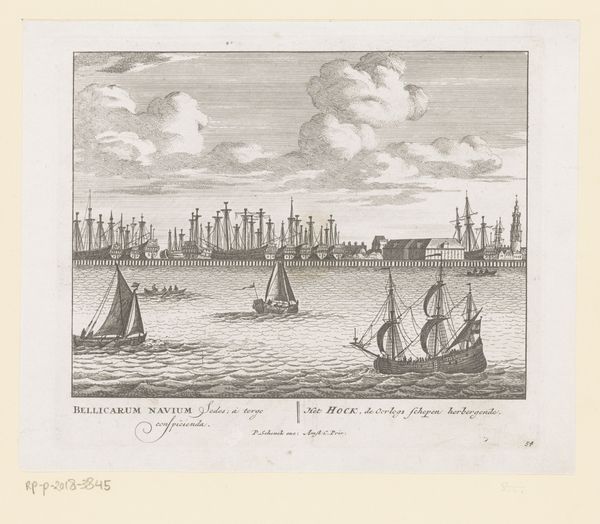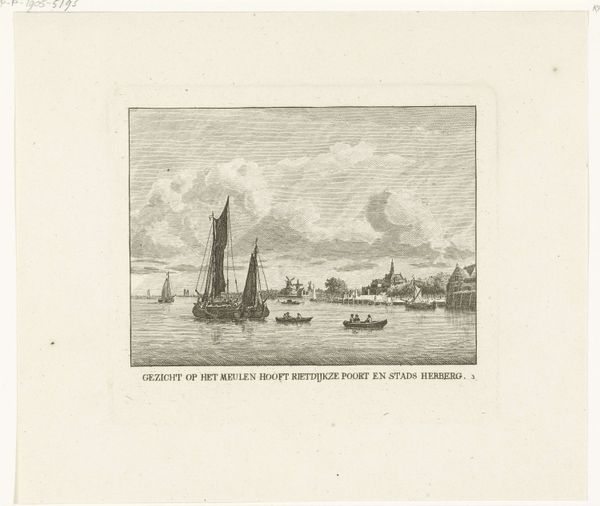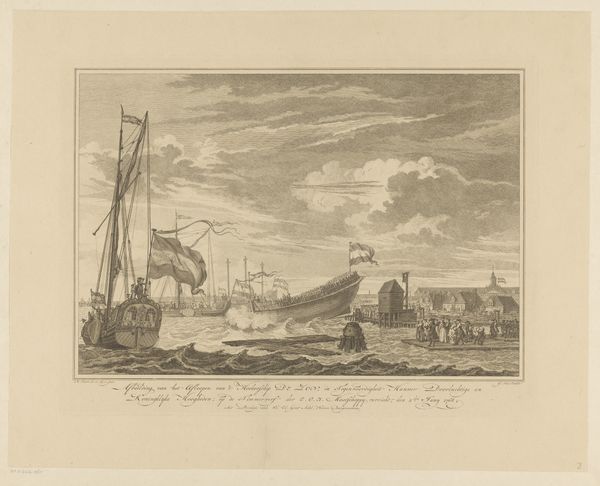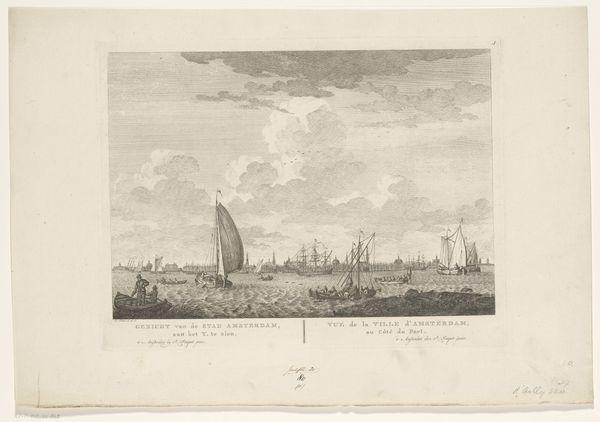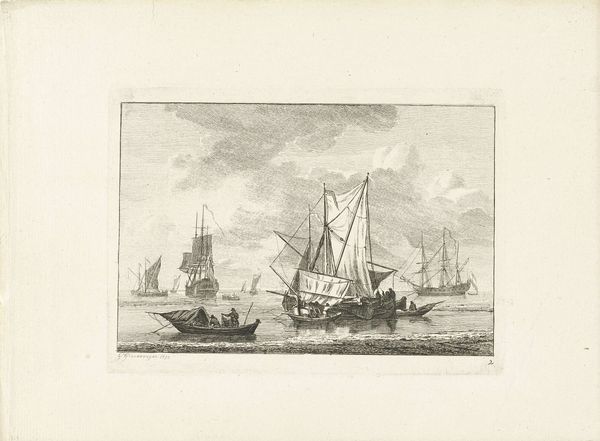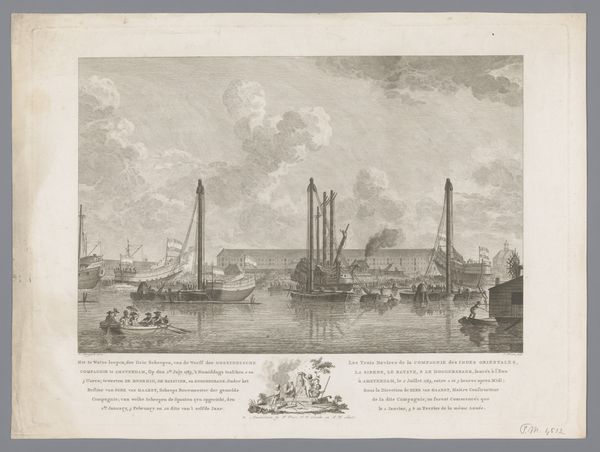
Gezicht over Merwede op Groothoofdspoort, Tol en Damiatebrug te Dordrecht 1803
0:00
0:00
carelfrederikibendorp
Rijksmuseum
print, etching, engraving
#
dutch-golden-age
# print
#
etching
#
landscape
#
cityscape
#
engraving
Dimensions: height 117 mm, width 144 mm
Copyright: Rijks Museum: Open Domain
Editor: This etching by Carel Frederik Bendorp from 1803 is called "View of the Merwede on Groothoofdspoort, Tol and Damiatebrug in Dordrecht." It depicts a cityscape, full of ships sailing along a wide river, but the subdued palette gives it a somber mood. What aspects of the image do you find most compelling? Curator: It's a seemingly straightforward depiction of Dordrecht, but I am immediately drawn to considering the socio-political function of cityscapes like this. The level of detail, for instance - the architectural precision and the busy waterways—speak volumes about civic pride and economic power in the Netherlands at the time. It served almost like propaganda. Editor: Propaganda? I never thought of landscape art as having a political purpose. Curator: Think about it: Whose stories are typically told and preserved in art? Paintings and prints like these showcased not only a place, but also its dominant ideologies and ruling classes. They often downplay social inequalities or omit less flattering aspects of urban life. This print subtly celebrates the wealth and order of the Dutch Golden Age. Editor: So, you're saying even in an apparently neutral scene, there are hidden messages. Are there other elements you think contribute to this? Curator: Absolutely. The choice to highlight the port and the bridge emphasizes trade and connectivity, visually reinforcing Dordrecht's importance. How the cityscape is framed – who gets to decide what's worthy of portrayal and circulation – is a crucial question to ask when looking at historical art. Editor: That gives me a lot to think about, I hadn’t considered that what is depicted can be interpreted through such a complex lens. Curator: Indeed. Recognizing art as a social product makes looking a more political act.
Comments
No comments
Be the first to comment and join the conversation on the ultimate creative platform.
